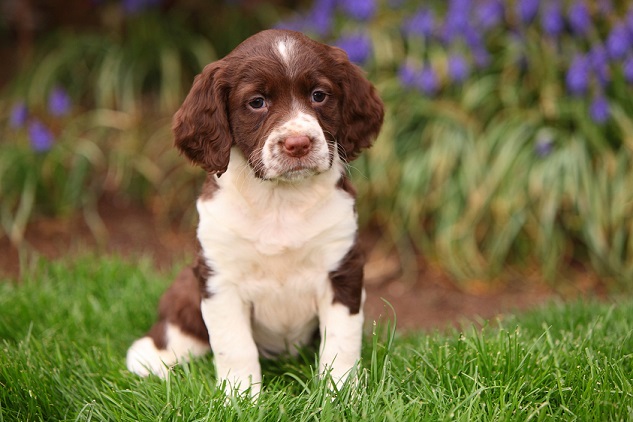
“Start training right away.”
That’s what you’ll hear if you add a new puppy to your family.
Good advice, but also overwhelming.
Puppies need to learn their names and basic commands but also how to walk on a leash, where to go potty and how to interact with other pets.
Where to even begin?
I turned to four experienced dog trainers and asked for their tips. You can’t go wrong teaching your puppy the following concepts right away, along with some of the basics, like potty training.
What to Teach Your New Puppy First
1. Socialization.
Puppy socialization is the process of gradually introducing your pup to a variety of people, places and experiences early in life, said Tonya Wilhelm, a professional dog trainer with Global Dog Trainer.
She said socialization is so critical because it can prevent a dog from developing behavioral problems later in life such as extreme fear or aggression.
Even if your puppy does not seem to have an issue with storms, resource guarding or separation anxiety, Wilhelm said problems can develop anytime in a dog’s life.
“In order to help buffer any future phobias, now is the time to develop the ‘no worries’ attitude with common fears,” she said.
To do this, she said to pair potential fears (like storms or strangers) with something your puppy finds valuable such as food or games.
2. Getting used to being handled and groomed.
“As early as possible, you should start to get the puppy comfortable with being handled, restrained and groomed,” Wilhelm said.
Some examples of what you should get your puppy used to include grooming his coat, wiping his feet, brushing his teeth, reaching for him quickly and trimming his nails.
“In these daily exercises, you will be teaching your puppy to trust you and to view these procedures as enjoyable and not stressful,” she said.
3. Self-control.
It’s critical for puppies to learn self-control, especially if they are going to outweigh their owners, said Jamie Ohman, a dog trainer with Siriusly Awesome Dog Training.
“Many of the behaviors our dogs do that we find annoying or unacceptable result from a lack of self-control,” she said.
These behaviors could include pulling on the leash, jumping up on people, chasing squirrels or stealing food from countertops.
To begin teaching a dog self-control, Ohman said she begins by teaching the puppy to wait in doorways. She also begins teaching loose-leash walking and manners around the food bowl.
4. How to be calm in a crate.
Teaching a dog to remain calm in a crate is important for potty training, but it can be helpful in other situations too.
Dog Trainer Abby Harrison gave some examples where crate training is helpful such as when you need your dog contained at the vet or if you have lots of people over and can’t have your dog “underfoot.”
“It is really easy to keep up the being calm in a crate if you do a little bit of it each day,” she said.
Harrison is a trainer with SitDogStay in Houston.
5. His or her name.
“If you can't get your puppy to pay attention to you, you sure won't get your puppy to sit, lie down or come when called,” said Tanzi Leary, a dog trainer in Baltimore. Her web site is DogCrazyLady.com.
This is why teaching your puppy his name is so important.
“Say your puppy's name, and when he looks at you, say ‘Good!’ and give him a tiny piece of food,” Leary said. “Repeat many, many times, until your puppy quickly looks at you.”
She said if your puppy doesn’t look at you, just make a kissing sound to prompt him and then reward.
“Don't repeat your puppy's name over and over if he isn't responding. That just makes him learn that his name doesn't mean anything, the opposite of what we want.”
What would you add to the list?
Let us know in the comments!
Want more puppy training tips? Check out these blogs.

